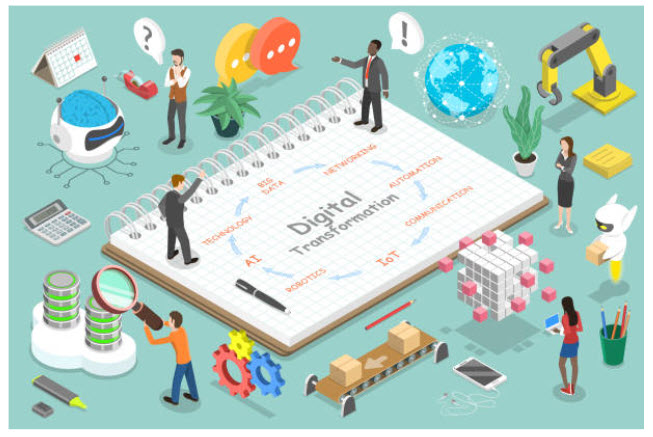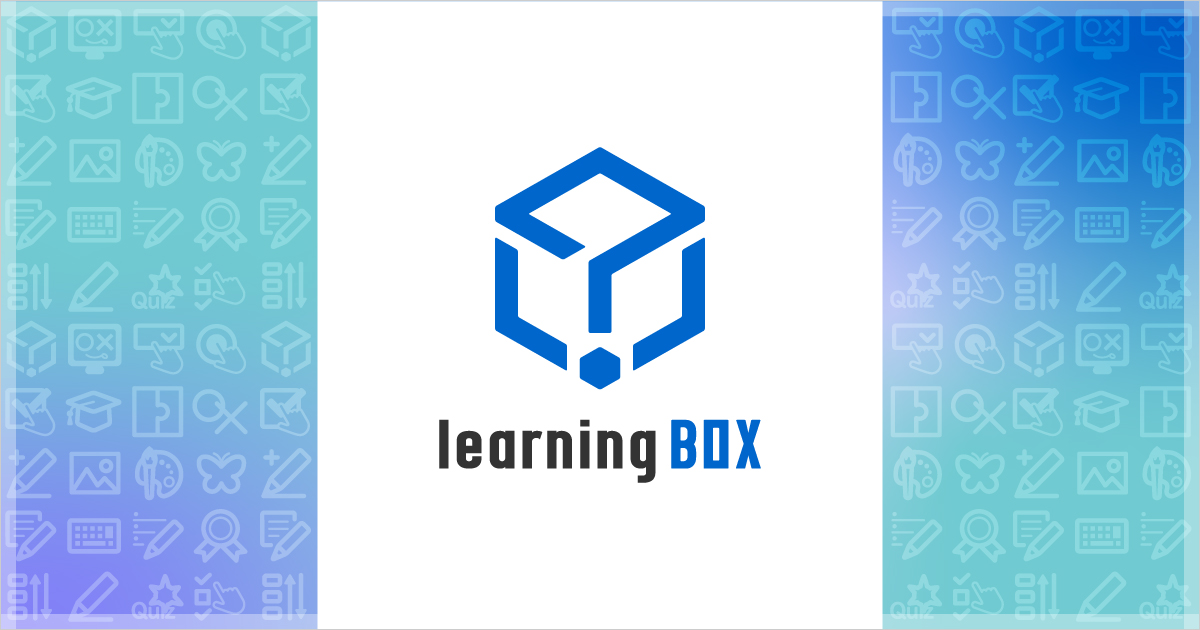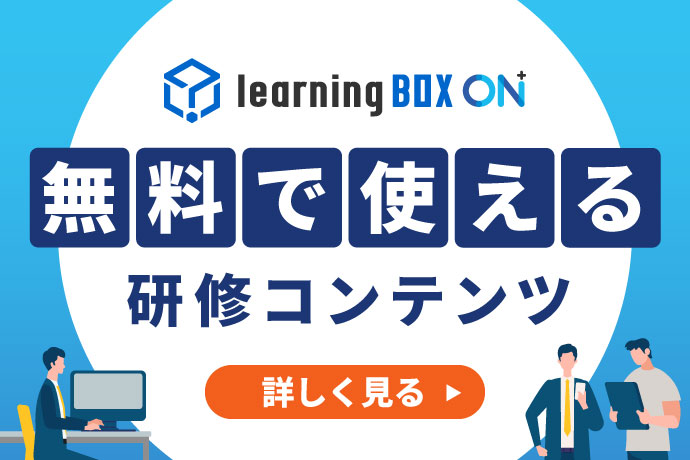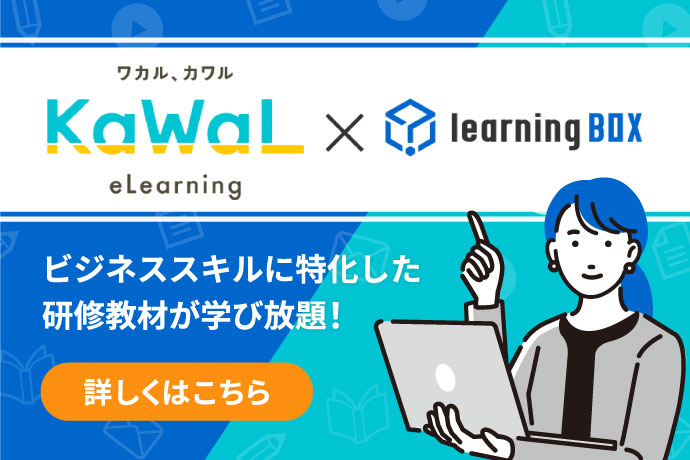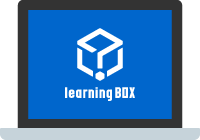Create Effective In-House Training Programs

Employee onboarding plays important roles to improve employee engagement and skills. Although the purpose of training depends on the position or department, a variety of skills including communication, management, and computer skills will be required at work.
To improve such skills, outsourcing training programs is one of the major methods. However, many companies may not be able to tell the effectiveness since they tend to entrust training programs to the L&D company from the beginning to the end.
From this point of view, in-house training is now gathering attention. In this article, we will elaborate on in-house employee onboarding, exploring the pros and cons, and some tips for success.
Contents
Pros and Cons

What are the pros and cons of in-house training? Before you start a program, compare the two and try to find the best way to take the most advantage of employee onboarding.
Advantages
Professional Development for Trainer
When it comes to in-house employee onboarding, employees in an organization will be in charge of trainers. Training the trainer provides them with opportunities for their personal development including their presentation and communication skills. Their knowledge and acquired skills will be a special advantage for professional development.
This “Train the trainer model” will distribute higher skills and deeper knowledge for trainers in charge in addition to the human development for trainees.
Straightforward Process
One of the biggest advantages of in-house training is that the program can be directly related to the daily work.
This direct pathway makes it possible to proceed with organizational strategy, and on-site training or other effective content can be highly customized depending on the specific goals.
Updatable
In this fast-changing environment, frequent information updates are required. Laws or social conditions vary each day, and each organization needs to catch up to follow them. Talking about onboarding, in-house training has huge advantages in that HR professionals can reflect changes immediately and train employees when new information is updated.
On the other hand, an outsourced training program takes time to make changes or requires additional cost. Rather, the modification request may not be accepted in many cases.
Business Assets
Outsourced training services companies are experts to teach general business skills and knowledge. In comparison, in-house training programs can include more specific elements into the program for business assets. Special know-how, knowledge and skills will be shared through the training program.
Such resources in an organization will result in effective human resources development and increase team bond regardless of diversified work style or job transfer.
Cons
Employee Workload
Instead of outsourcing programs, some employees will be in charge. Becoming a trainer will be an advantage for professional development as written above, however, they need to spend time on preparing. Not only trainers but other employees in charge should be taken into account as for their workload.
Training the trainers, arranging venues, assessing effectiveness and so on, all of the factors will be indispensable for in-house training. The process of this training and development may increase labor cost in addition to employee workload. It is important to balance the cost of training depending on the goals.
Taking Time to Train the Trainer
Even though employees in charge of trainers have special skills and knowledge, they are not always used to teaching.
Inadequate training for trainers may lead to one-sided teaching which is not aligned with the training and development initiatives, making it difficult to provide appropriate guidance for employee onboarding. To avoid such unwelcome situations, efforts will be required to improve their facilitation skills and public speaking skills. At this point of view, additional training and workload will be required to train the trainers.
Also, in order to bottom up entire training skills and prepare in case of handover, it will be preferable to train multiple trainers in advance.
No Opportunities to Acquire Outside Expertise
In terms of in-hose onboarding, there will be no opportunities to acquire expertise from outside of a company. Without trainers’ efforts, it is difficult to keep up with the latest trend in the sector or acquire skills and know-hows that employees do not have.
New skills and knowledge play an important role to improve performance at work, however, there will be challenges for trainers to have opportunities to brush up their skills, acquire knowledge and fresh perspectives unless they try to motivate themselves and take actions.
Difficult to Evaluate Objectively
In general, L&D companies have specific criterias for their training. After implementing a program, they will gather feedback from companies or employees through questionnaires and analyze the results according to outcomes and satisfaction.
On the other hand, many companies implementing in-house onboarding tend not to have such elements nor analyze data. It will be necessary to design training programs with some specific criterias aligned with their goals and objectives.
Back to ContentsIn-House or Outsourcing?

As written above, in-house onboarding has pros and cons. Depending on the purpose, balance the effects, costs and workload.
Blending in-house and outsourcing training is one of the successful methods. The following explains some training methods according to the features.
What Topics Are Suitable for In-House Training?
Sharing Management Philosophy and Vision
Company goals are the most important part as for management. Its philosophy and vision will take employees to the same objective, and that is why each organization cannot disregard it. When it comes to outsourcing, it will be very difficult to tell the bottomline since they do not exactly know the history, thoughts of the founder, company products and so on. In this point of view, in-house training can be an essential opportunity to persuasively explain the background of the company and the specific goals.
When implementing in-house employee onboarding, it will be effective to ask managers to make a speech during the program. They are not only familiar with company products but also with the purpose of their job. Messages from such employees will lead to trainees’ sympathy and convincing.
For new hires, it will be effective to introduce managers’ job experiences. Their stories will improve new employees’ interest and a sense of belonging to the company.
Company Guidelines
Personnel assessment, information security and how to handle company-owned equipment are important elements for every employee to understand, and no organization has the same ones. In the case of such unique factors, in-house will be effective to be taken in to disseminate internal rules. Since company guidelines have a wide range of resources to follow, training should be conducted multiple times depending on the theme.
Current Work Examples
What is related to practical business is appropriate for in-house training since trainees cannot know such information through outsourcing training. Following the process and know-hows accumulated by the company helps to enhance employees’ understanding and knowledge for professional development. Likewise, it will be good opportunities for trainers as well to reconfirm the importance of the tips.
Apart from on-the-job training, it will be effective to let them take another way of training. Multiple methods help them think and see things from different perspectives, which will lead to company assets in the future.
What Topics Are Suitable for Outsourced Training?
General Skills And Knowledge
External training companies have developed their own training methods including business manners and labor management. These skills are required in common and higher quality of training is expected than in-house.
According to the position and career, different types of topics will be offered. Wide range of professional trainers specifically know what new hires or managers should learn through the training.
Latest Information in the Sector
When learning specialized knowledge and the latest information in the sector, it is more cost-effective to outsource the training. Employees in charge of training have daily tasks and it will be their workload to do research for specific topics in their working hours. L&D pros, on the other hand, have know-hows to get the latest information. Although each organization's policy needs to be taken into account, outsourcing training will be one of the shortcuts to further prosper for some topics.
Special Services/Equipment
In business, there are some cases to introduce some services or equipment developed by suppliers. Before introducing them, training is necessary for employees in charge and related divisions to learn how to use it.
Suppliers may not be used to conduct training and it is better to have a meeting in advance to discuss the purpose of the training and how to proceed.
Back to ContentsKey to Success

Here are some tips for successful in-house training.
Clarify Competencies
Competency is a set of skills, knowledge, behavior, abilities and so on that contribute to performance of a job. This word is often used in HR development and behavioral characteristics refer to the ideas that underlie an individual's behavior in a certain way.
When conducting in-house training, clarify the competencies that match the object. When it comes to leadership competencies, for instance, set specific criterias of ideal leader that the organization wants to measure for assessment.
Questionnaires will help to find a role model within the company and specific criterias to measure competencies.
Evaluate Trainer
Evaluation plays an important role for trainers to become accountable for results when conducting in-house training. This means that such evaluation can be a trigger to make efforts for higher quality of training as well as to prevent training from mere lectures such as just distributing handouts and showing presentation slides. Such improvement will result in a plethora of benefits for a company.
When struggling to build a training program for trainers, it will be effective to contact to L&D professionals to take the biggest advantage of in-house training.
Stay Up-To-Date
In this fast-changing society, information cannot stay the same for a long period of time. As for training programs, regular updates are important to keep the quality high or higher. In particular, changes of law and regulations related to business cannot be ignored and HR pros should keep eyes on these elements.
Narrow Your Focus
As mentioned above, some training content is suitable for in-house production while others are not. It will make a positive impact when focusing on priority in terms of cost, training skills, expertise and so on.
Back to ContentsSummary
In this article, we delved into the pros and cons of in-house training and the key to success. With appropriate topics, in-house training will make differences in many ways within your organization. In-house training can also provide opportunities to protect and improve company assets and result in avoiding early retirement.
To tailor training programs to meet specific needs, elearning is one of the effective methods to introduce.
learningBOX, known as an easy-to-use learning management system (LMS), helps in training course building. Users can easily create original content online and distribute it to learners with just a few clicks. In terms of the cost, it is remarkably low and a number of companies have been switching from other LMS to learningBOX.
learningBOX offers a forever Free Plan with almost all features available. It deserves trying if you are thinking of introducing elearning for in-house training.
▼You may also like:
Back to Contents Back to Article List


